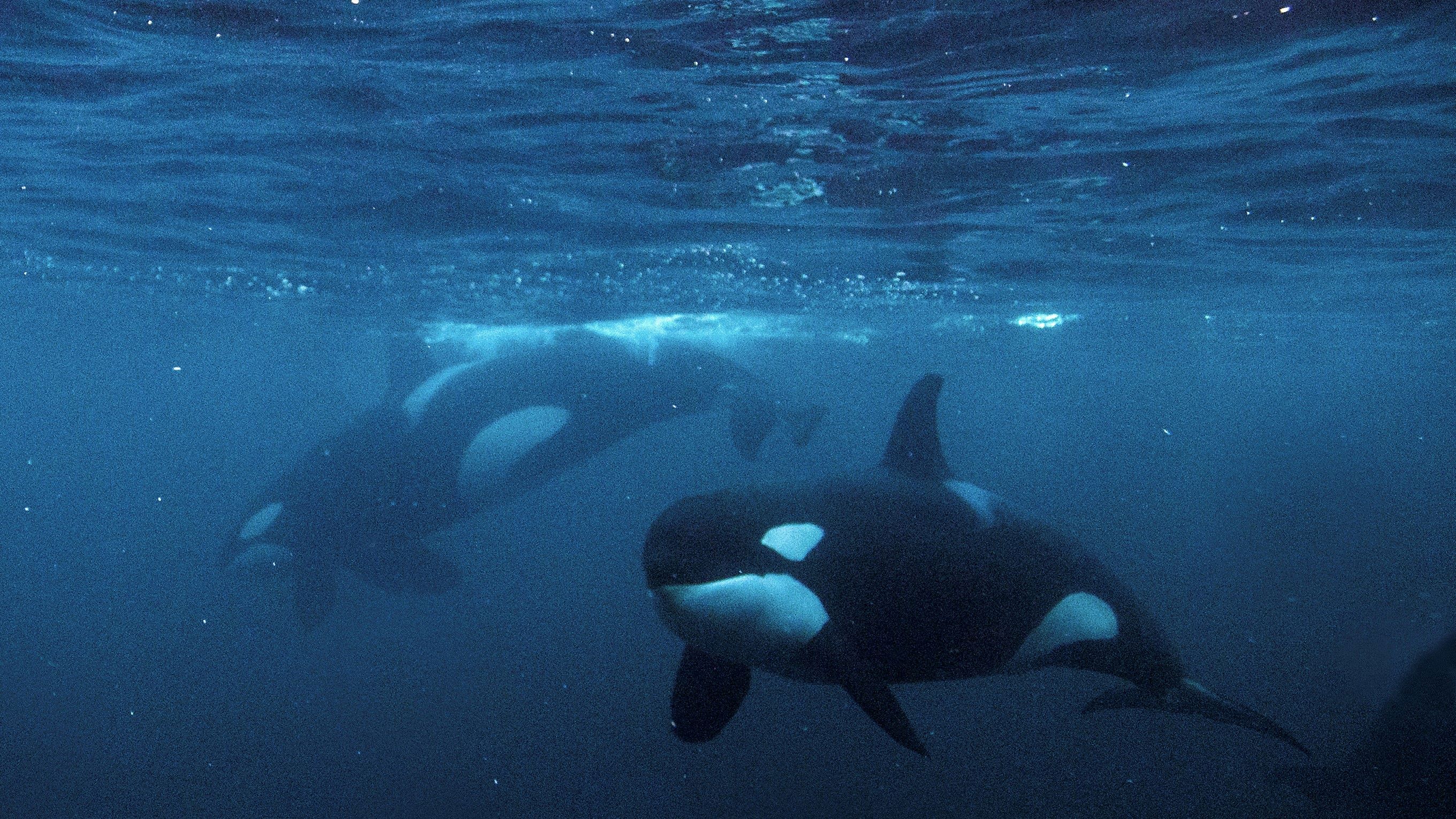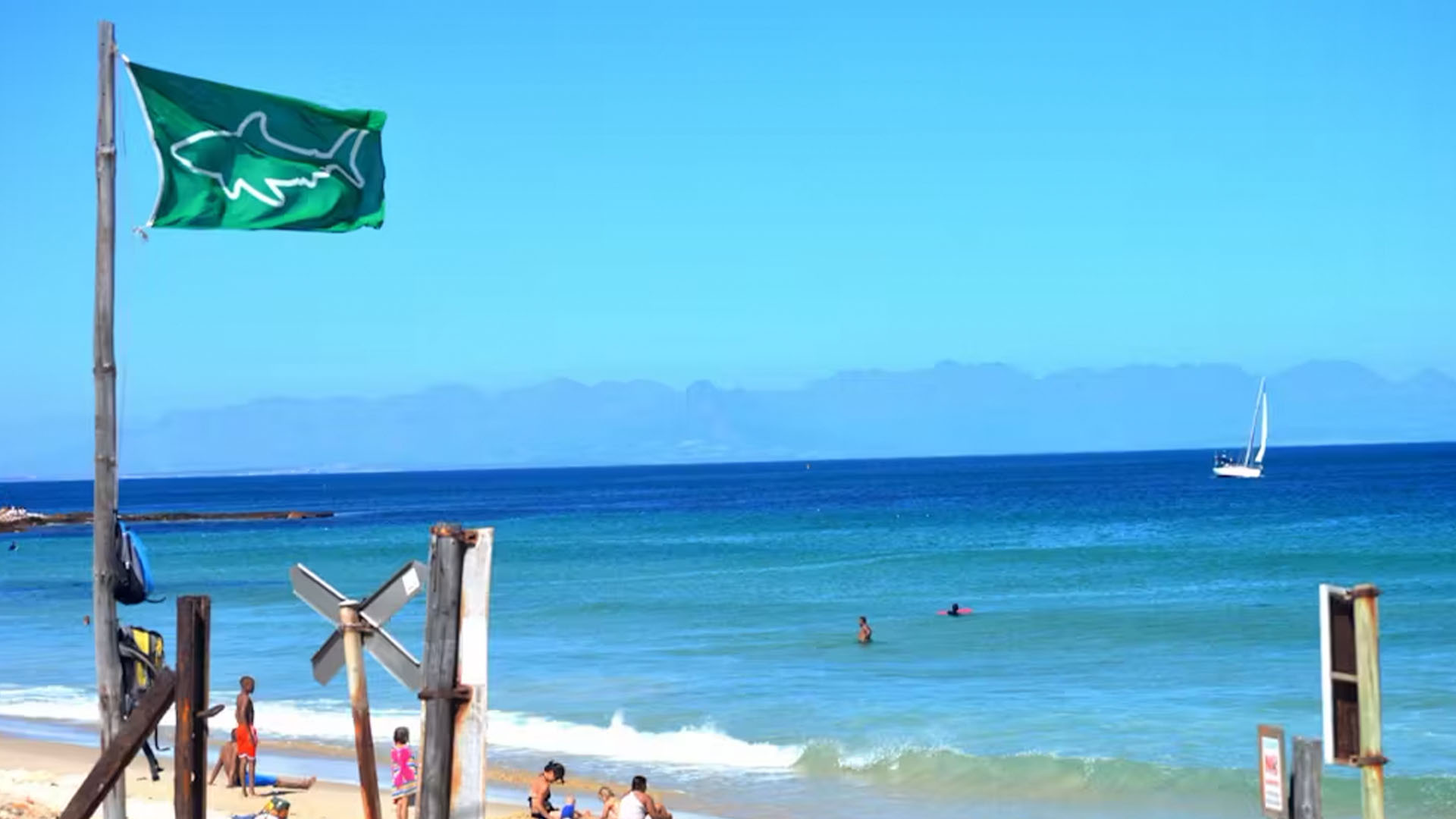2 liver-eating orcas forced an entire population of great white sharks to flee their home waters
Researchers have discovered that hundreds of great white sharks that vanished from their home off the Western Cape of South Africa have moved east in order to survive — but this could spell trouble for both the sharks and the people living there.

South Africa is renowned for having one of the world's biggest populations of great white sharks (Carcharodon carcharias). Substantial declines have been observed, however, in places where the sharks normally gather on the coast of the Western Cape province. Sharks congregate at these locations to feed, interact socially, or rest.
In Cape Town, skilled "shark spotters" documented a peak of over 300 great white shark sightings across eight beaches in 2011, but have recorded no sightings since 2019. These declines have sparked concerns about the overall conservation status of the species.
Conserving great white sharks is vital because they have a pivotal role in marine ecosystems. As top predators, they help maintain the health and balance of marine food webs. Their presence influences the behavior of other marine animals, affecting the entire ecosystem's structure and stability.
Marine biologists like us needed to know whether the decline in shark numbers in the Western Cape indicated changes in the whole South African population or whether the sharks had moved to a different location.
To investigate this problem, we undertook an extensive study using data collected by scientists, tour operators and shore anglers. We examined the trends over time in abundance and shifts in distribution across the sharks' South African range.
Our investigation revealed significant differences in the abundance at primary gathering sites. There were declines at some locations; others showed increases or stability. Overall, there appears to be a stable trend. This suggests that white shark numbers have remained constant since they were given protection in 1991.
Looking at the potential change in the distribution of sharks between locations, we discovered a shift in human-shark interactions from the Western Cape to the Eastern Cape. More research is required to be sure whether the sharks that vanished from the Western Cape are the same sharks documented along the Eastern Cape.
Get the world’s most fascinating discoveries delivered straight to your inbox.
The stable population of white sharks is reassuring, but the distribution shift introduces its own challenges, such as the risk posed by fisheries, and the need for beach management. So there is a need for better monitoring of where the sharks are.
Factors influencing shark movements
We recorded the biggest changes between 2015 and 2020. For example, at Seal Island, False Bay (Western Cape), shark sightings declined from 2.5 sightings per hour in 2005 to 0.6 in 2017. Shifting eastward to Algoa Bay, in 2013, shore anglers caught only six individual sharks. By 2019, this figure had risen to 59.
The changes at each site are complex, however. Understanding the patterns remains challenging.
These predators can live for more than 70 years. Each life stage comes with distinct behaviors: juveniles, especially males, tend to stay close to the coastline, while sub-adults and adults, particularly females, venture offshore.
Environmental factors like water temperature, lunar phase, season and food availability further influence their movement patterns.
Changes in the climate and ocean over extended periods might also come into play.
As adaptable predators, they target a wide range of prey and thrive in a broad range of temperatures, with a preference for 57 to 75 degrees Fahrenheit (14 to 24 degrees Celsius). Their migratory nature allows them to seek optimal conditions when faced with unfavorable environments.
Predation of sharks by killer whales

The movement complexity deepens with the involvement of specialist killer whales with a taste for shark livers. Recently, these apex predators have been observed preying on white, sevengill and bronze whaler sharks.
Cases were first documented in 2015 along the South African coast, coinciding with significant behavioral shifts in white sharks within Gansbaai and False Bay.
Although a direct cause-and-effect link is not firmly established, observations and tracking data support the notion of a distinct flight response among white sharks following confirmed predation incidents.
More recently, it was clear that in Mossel Bay, when a killer whale pod killed at least three white sharks, the remaining sharks were prompted to leave the area.
Survival and conservation of sharks
The risk landscape for white sharks is complex. A study published in 2022 showed a notable overlap of white sharks with longline and gillnet fisheries, extending across 25% of South Africa's Exclusive Economic Zone. The sharks spent 15% of their time exposed to these fisheries.
The highest white shark catches were reported in KwaZulu-Natal, averaging around 32 per year. This emphasized the need to combine shark movement with reliable catch records to assess risks to shark populations.
As shark movement patterns shift eastward, the potential change in risk must be considered. Increased overlap between white sharks, shark nets, drumlines (baited hooks) and gillnets might increase the likelihood of captures.
Beach safety and management adaptation
Although shark bites remain a low risk, changing shark movements could also influence beach safety. The presence of sharks can influence human activities, particularly in popular swimming and water sports areas. Adjusting existing shark management strategies might be necessary as distributions change.
Increased signage, temporary beach closures, or improved education about shark behavior might be needed.
In Cape Town, for example, shark spotters have adjusted their efforts on specific beaches. Following two fatal shark incidents in 2022, their program expanded to Plettenberg Bay. Anecdotal evidence highlights additional Eastern Cape locations where surfers and divers encounter more white sharks than before.
Enhanced monitoring and long-term programs
Further research is required to understand the factors behind the movements of sharks and their impact on distribution over space and time. Our study underscores the importance of standardizing data collection methods to generate reliable abundance statistics across their entire range. Other countries suffer from the same problem.
Additionally, we propose establishing long-term monitoring programs along the Eastern Cape and continuing work to reduce the number of shark deaths.
This edited article is republished from The Conversation under a Creative Commons license. Read the original article.

Dr. Alison Kock is a marine biologist at the Cape Research Centre, South African National Parks (SANParks) and an Honorary Research Associate with the South African Institute for Aquatic Biodiversity and the Institute for Communities and Wildlife in Africa at the University of Cape Town. Alison's research interests are broad and include investigating the socio-ecological role of top predators, particularly large, coastal sharks, and evaluating the effectiveness of marine protected areas. She leads research and long-term ecological monitoring in four marine protected areas in the Northern and Western Cape of South Africa under the management of SANParks. Alison completed her PhD in biological sciences at the University of Cape Town in 2014 during which time she also co-established the Save Our Seas Foundation Shark Centre in Kalk Bay and helped to strategically grow the non-profit organization, Shark Spotters, whose vision is the sustainable co-existence of people and sharks. She currently serves on their executive committee. Alison is committed to ensuring that scientific information is effectively translated into management and policy actions and thus also serves on several national scientific working groups including the National Marine Biodiversity Scientific Working Group, the Top Predator Scientific Working Group, the South African Whale Disentanglement Network, the Seabird Technical Team and the Scientific Authority of South Africa.




